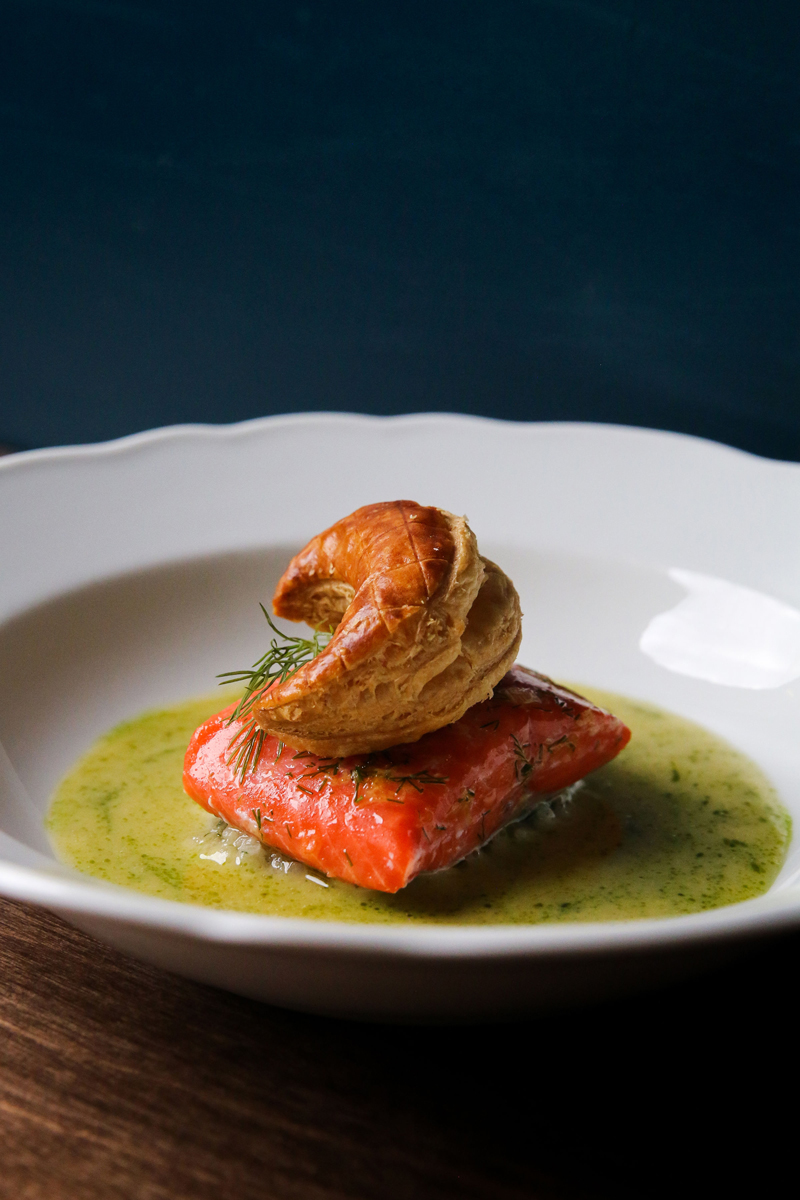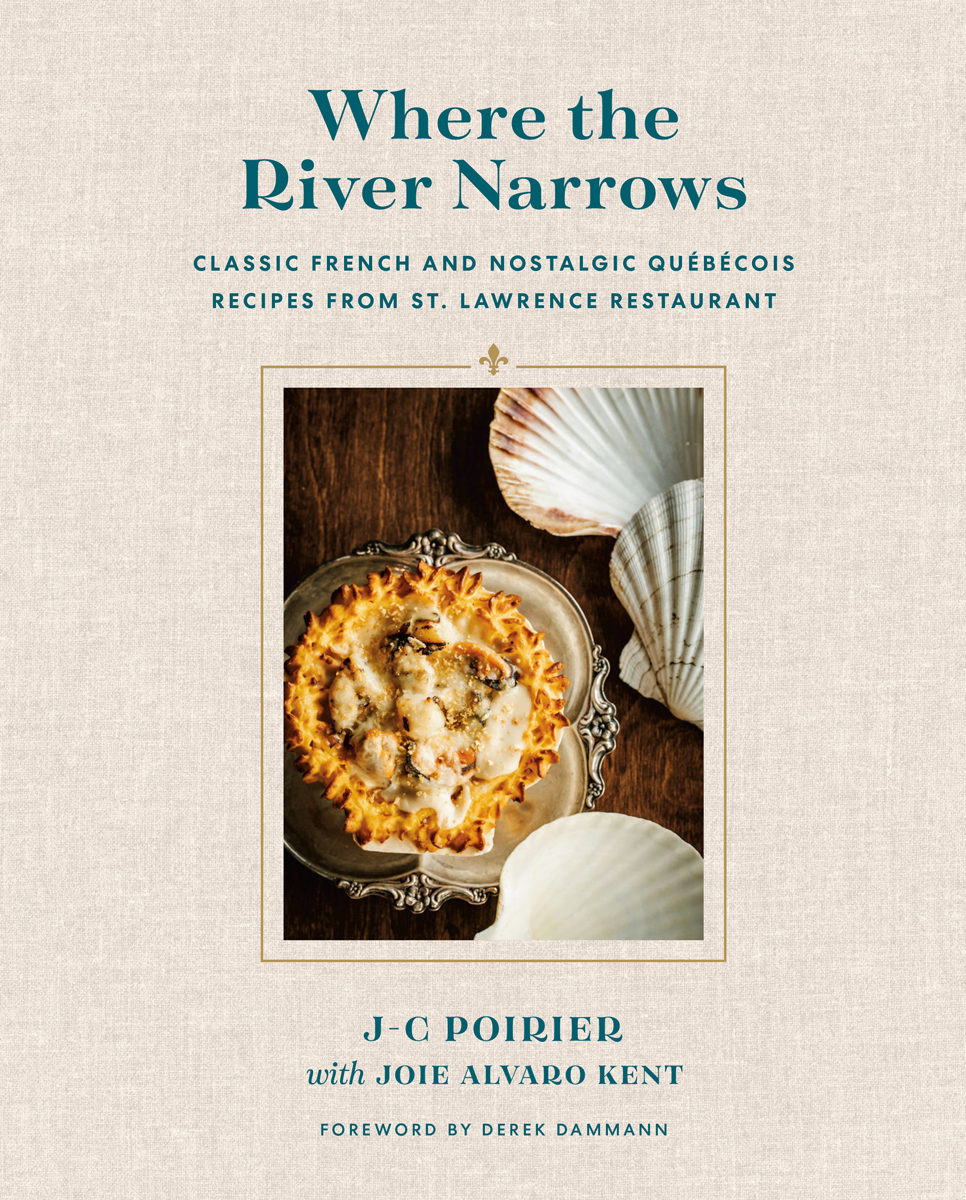
Wine Culture Magazine

At St. Lawrence, chef J-C Poirier prepares Quebcoic classics with haute cuisine technique.
Carlo Ricci photo courtesy of Appetite by Random House
Spring at St. Lawrence means the bright taste of asparagus, artichokes, fresh herbs and all the lightly bitter greens of the young season. This being St. Lawrence, though, it also means all things rich, buttery and lavish with cream: puff pastry that shatters at the gentle touch of a fork, sauces as thick and lush as cut velvet, complex bites of savoury things braised, confited and stuffed.
It’s all perfectly delightful. But it also presents special challenges when it comes to pairing with wine.
Now that chef-owner J-C Poirier has released his first cookbook, Where the River Narrows (written with Joie Alvaro Kent and published by Appetite), you will almost certainly be tempted to make, say, the tourtière or cretons or asparagus with chervil cream sauce and puff pastry. And then you’ll wonder what to serve with it.
For that, we turned to David Lawson, sommelier and “director adjoint” of this Michelin-starred restaurant that combines the nostalgic flavours of Poirier’s Quebecois home with classic French haute cuisine.
Before landing at St. Lawrence four years ago, Lawson had worked at both a fine-dining restaurant in Ottawa where each of the tasting menu’s 12-plus courses were classically paired and at Montreal’s Joe Beef with Vanya Filipovic, “perhaps Canada’s best sommelier,” whose approach was completely different.
“She does things based on passion and intuition,” Lawson says. “When I find a wine I can taste that passion in, that to me is an immediate yes.”
Often those wines come from smaller producers in less well-known appellations of France; Limoux instead of Champagne, for instance; the Jura or Basque region instead of Burgundy. It’s not just that those winemakers produce exciting wines; it’s also an opportunity to share something with their guests that they may never have heard of.

Rich, buttery puff pastry is a signature component of many St. Lawrence dishes. Carlo Ricci photo courtesy of St. Lawrence
“When I go out to dinner, I like to discover something new, and I think a lot of people are like that,” Lawson says. “Usually we have people coming in wanting that new experience, and at the same time realizing that everything at St. Lawrence is based on tradition.”
And then there is the challenge of finding the right flavours to complement the food.
“St. Lawrence does rich food, but J-C has got an affinity for using a touch of vinegar or a splash of lemon and that’s great for me because I love pairing wine with bracing acidity. Even in our deepest winter menus, which are our richest, he finds a way to infuse some brightness,” Lawson says. “For me, some of my most engaging pairings are the ones that contrast rather than complement.”
Take those puff pastry dishes, such as the escargots in pastry shells or the mushroom vol au vent with “all that decadence and butter.” To go with them, Lawson would select “something with zippy acidity, a lighter feel on the palate. I really like a refreshing wine to go with J-C Poirier’s food. For the vol au vent, I like a brut naturel sparkling wine.”
It’s the contrast of acid that makes you crave another bite, another sip, that makes you want to go back for more, he says. “If I’m having these buttery rich dishes, there’s nothing better than something palate cleansing, with good acidity.”
But when it comes to spring’s fresh, slightly bitter greens, which are notoriously difficult to pair, he takes a slightly different approach.
“Sometimes a counter pairing can work, but when it’s a bitter green, you want to lean into that,” he says. “If you have a wine with a green note, that can be lovely. But I’m looking for what else is on the plate.”

Photo courtesy of Appetite by Random House
Take, for instance, asparagus. If it is in a vinaigrette, it demands a wine that has higher acidity. If it is in a cream sauce, it needs something a little richer.
In general, Sauvignon Blanc is a classic choice for bitter greens, but other good options include any of the wines that have “green” in the name, such as Portuguese vinho verde or Austrian Grüner Veltliner. “Any of these can do every well, depending on what else is in the dish.”
What if, though, you have an asparagus dish is at once rich and a little tart on top of all those green spring notes, like the asparagus with chervil cream and puff pastry in the book? “Chervil,” Lawson points out, “has a nice delicate flavour, so I’d stay away from anything with too much oak. I’m talking just a light kiss of oak.”
He might suggest a white Burgundy or perhaps an Alsatian Riesling. More likely, though, he’d suggest something totally unexpected from a region you’ve never heard of and send your tastebuds on a thrilling journey.
“Classics are classics for a reason, but we like bringing our guests new things. We don’t expect people to know these small appellations. We love to do that for them.”

Joanne Sasvari is editor of Vitis and The Alchemist magazines. She also writes about food and drink for WestJet and Vancouver Sun, and is author of the Wickaninnish and Vancouver Eats cookbooks.

Joanne Sasvari is editor of Vitis and The Alchemist magazines. She also writes about food and drink for WestJet and Vancouver Sun, and is author of the Wickaninnish and Vancouver Eats cookbooks.
Copyright © 2025 - All Rights Reserved Vitis Magazine